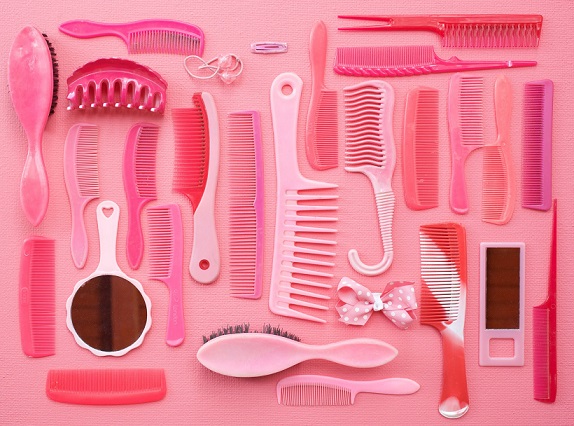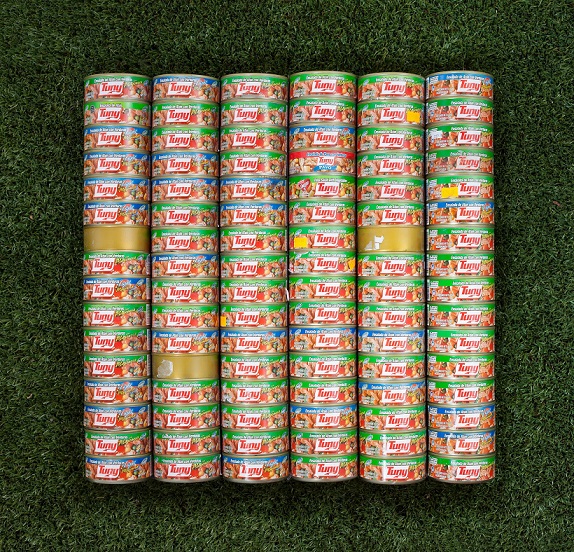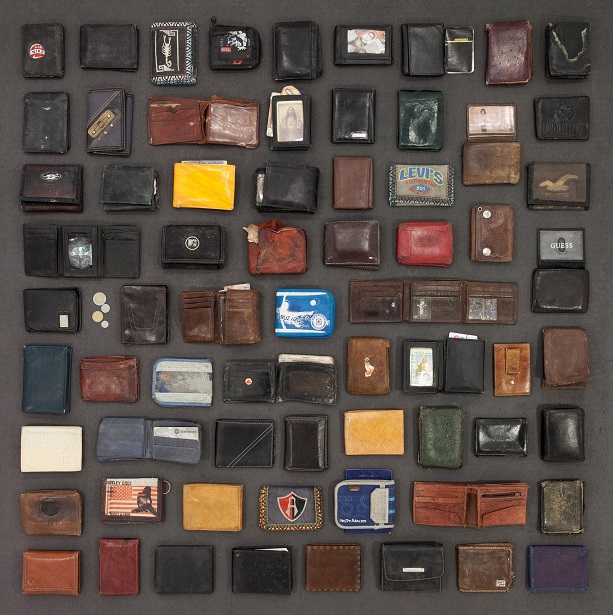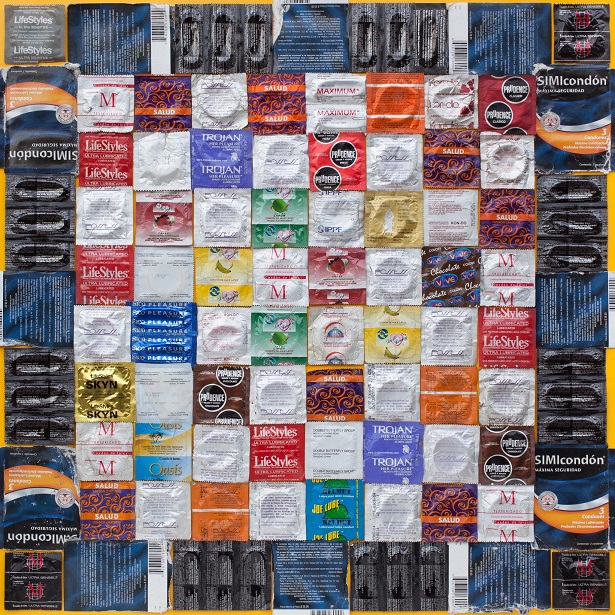A janitor explains why he took photos of belongings taken from migrants during the Bush and Obama years. The images have been shared widely as the immigration debate has intensified.
“Pink Combs and Brushes,” a photograph taken in 2012 by Tom Kiefer, who worked as a janitor at a Customs and Border Protection center in Arizona for more than a decade. He collected items confiscated by Border Patrol agents from migrants crossing the United States border with Mexico. Combs, brushes and mirrors were considered nonessential and possibly dangerous, he said. “They are discarded when migrants arrive.”CreditTom Kiefer
By Laura M. Holson
July 2, 2018
For Tom Kiefer, they were symbols of humanity.
Half-used bars of soap. Bibles with pages earmarked and worn from prayer. Wallets with credit cards and driver’s licenses. And lots of unopened cans of tuna.
For more than a decade, Mr. Kiefer worked as a janitor at the Customs and Border Protection center in Why, Ariz., before leaving in 2014.
There, he collected tens of thousands of items that were confiscated and thrown in the trash by Border Patrol agents from undocumented migrants crossing the border from Mexico into the United States. He began photographing the items in 2007.
“I couldn’t leave them,” he said.
The result was “El Sueño Americano” (The American Dream), a series of 600 photographs that has been exhibited at museums and galleries and has drawn considerable media attention. In October, more than 100 of those photographs will go on view at Michigan’s Saugatuck Center for the Arts.
Mr. Kiefer began working with Customs and Border Protection in 2003, during the George W. Bush administration, and left late in Barack Obama's second term.
When migrants are apprehended, Daniel Hernandez, a Border Patrol spokesman, said agents confiscate items migrants carry with them, much like when a person is admitted to jail. Even as the immigration debate has reignited under President Trump, Mr. Hernandez said that little has changed with regard to what undocumented migrants are allowed to keep when stopped by agents.
You have 4 free articles remaining.
Subscribe to The Times
Items are cataloged, stored and, later, returned, he said. But possessions are often left behind and end up in the trash: soiled clothing, books, wallets and photographs. Other items are seized, including food, lighters, knives and anything deemed dangerous.
In an interview, Mr. Kiefer, who lives in Ajo, Ariz., discussed several photographs he took of confiscated items. His comments have been condensed for clarity.
CreditTom Kiefer
‘Tuny,’ 2014
Mr. Kiefer first came across the confiscated items when he was rummaging through trash looking for packaged food to donate to a food bank. There, he found cans of tuna fish, a rich source of protein and easy to carry. “Perfectly good food was being thrown away,” he said. “The agents didn’t like seeing food thrown away either. So I started to collect it. Then I started seeing other things, like Bibles and toys and rosaries. It was so heartbreaking. I couldn’t let those things remain in the trash.”
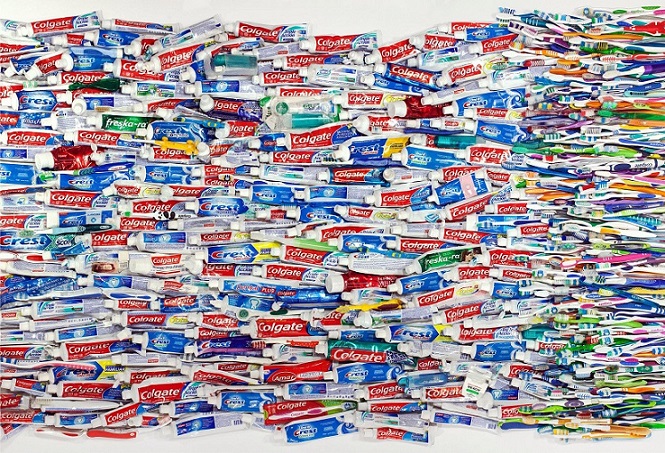
CreditTom Kiefer
‘Oral Hygiene,’ 2013
“The first thing that surprised me was seeing all the toothbrushes,” Mr. Kiefer said. “There were dozens and dozens of them in the trash. I wasn’t thinking of collecting them in memoriam. I was thinking they should not go in the landfill. I found Swiss Army knives. Combs. I found half full bottles of water. That was annoying. I had to empty them out. But that was my job.”
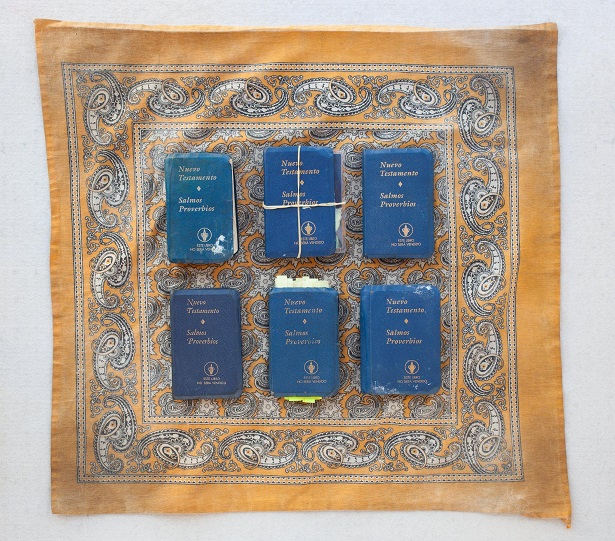
CreditTom Kiefer
‘Nuevo Testamentos,’ 2013
“I’ve never done a complete inventory, but I have 15 to 20 of them,” Mr. Kiefer said of the Bibles he collected. “There were these pocket-size New Testament Gideons Bibles that came out of Tennessee. They were printed in Spanish. So I called the company in Tennessee and explained that I live near the border and wanted to know more about them. I was curious about how these were distributed and who they went to. The woman I talked to thought I was doing some kind of investigative report. She never told me.”
CreditTom Kiefer
‘Billfolds and Wallets,’ 2013
“They’d still have their identification in the wallet,” Mr. Kiefer said of the many billfolds and wallets he found in the trash. “And credit cards. It was just cruel. They were safe with me, but it didn’t seem right that the janitor could find this. These should be secure.”
CreditTom Kiefer
‘Gloves,’ 2013
“When people see this, they reference the Holocaust Museum,” Mr. Kiefer explained, speaking of the thousands of shoes confiscated at concentration camps that are on display at the United States Holocaust Memorial Museum in Washington. “I don’t feel comfortable talking about that.”
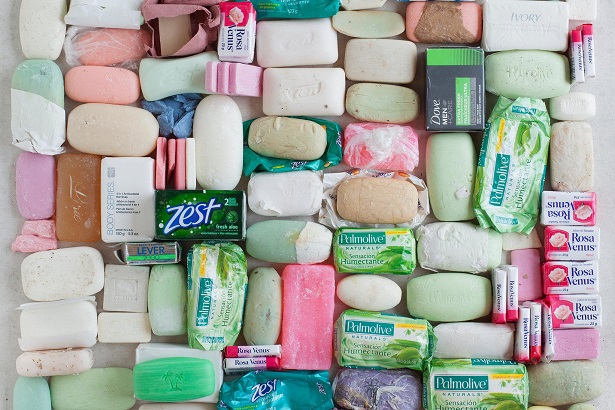
CreditTom Kiefer
‘Soap,’ 2013
“The migrants would be required to give up their backpacks,” he said. “The agents would go through them and toss out what they could. Agents found soap in the backpacks. It didn’t even dawn on me to collect soap. I mean, they couldn’t even have their own soap.”
CreditTom Kiefer
